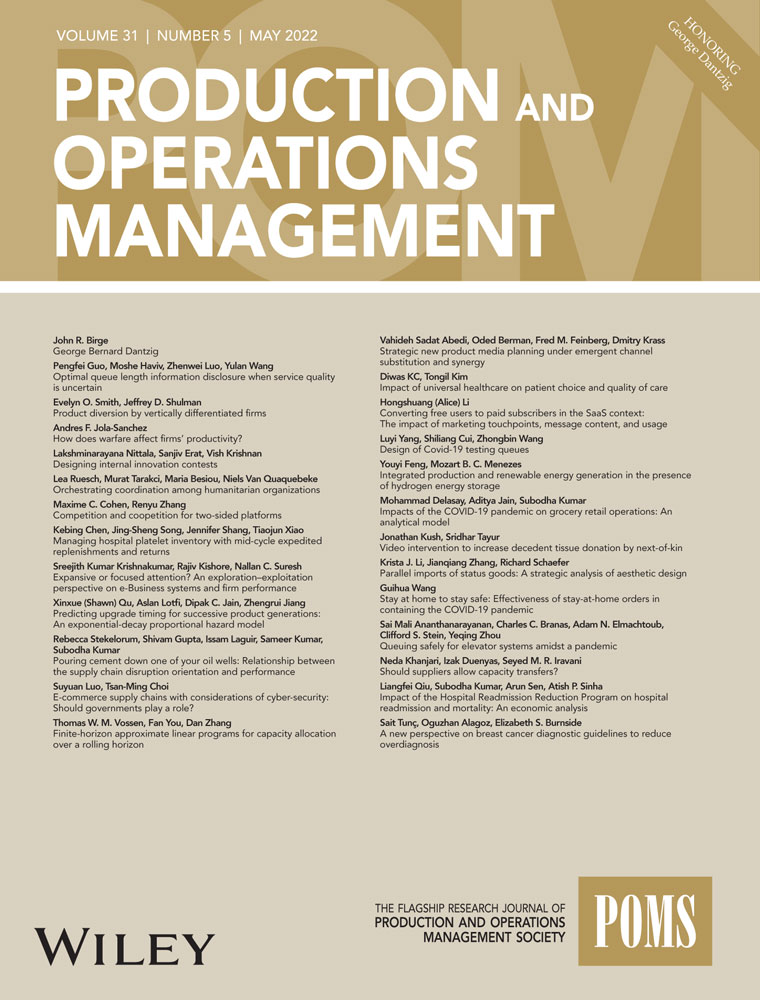Managing hospital platelet inventory with mid-cycle expedited replenishments and returns
Handling editor: Michael Pinedo
Accepted by Michael Pinedo, after 3 revisions.
Abstract
Motivated by the need of small and medium-sized hospitals to improve their platelet inventory management and achieve best practices, we consider an inventory system for a perishable product with a three-period shelf life over a finite horizon. In the system, the regular replenishment in each cycle is supplemented by an inventory adjustment opportunity in mid-cycle involving expedited orders and returns. We show that an optimal regular replenishment policy is an (s, S, S(x)) policy. Namely, if the initial net inventory x is below the threshold s, it is optimal to place a regular order to raise the inventory to a state-independent target S; otherwise, raise the inventory to a state-dependent target S(x). We also show that the mid-cycle inventory adjustment policy is a control-band policy with two thresholds. If the mid-cycle net inventory is above the upper threshold, it is optimal to return the inventory in excess of that threshold to a central blood bank; if the mid-cycle net inventory is below the lower threshold, it is optimal to expedite replenishment up to that threshold; otherwise, do nothing. If non-fresh platelets are used in the expedited order, we can obtain closed-form expressions for the optimal policy parameters. When fresh platelets are used for the expedited order, we apply anti-multimodularity techniques to establish structural properties of the optimal policy to guide practice and reveal the substitution relationship between the replenishment quantity and the existing inventory of various ages. These structural properties also hold for the case of general shelf lives. Our numerical study shows that the more flexible and adaptive policy proposed in this research outperforms those studied in the literature.




